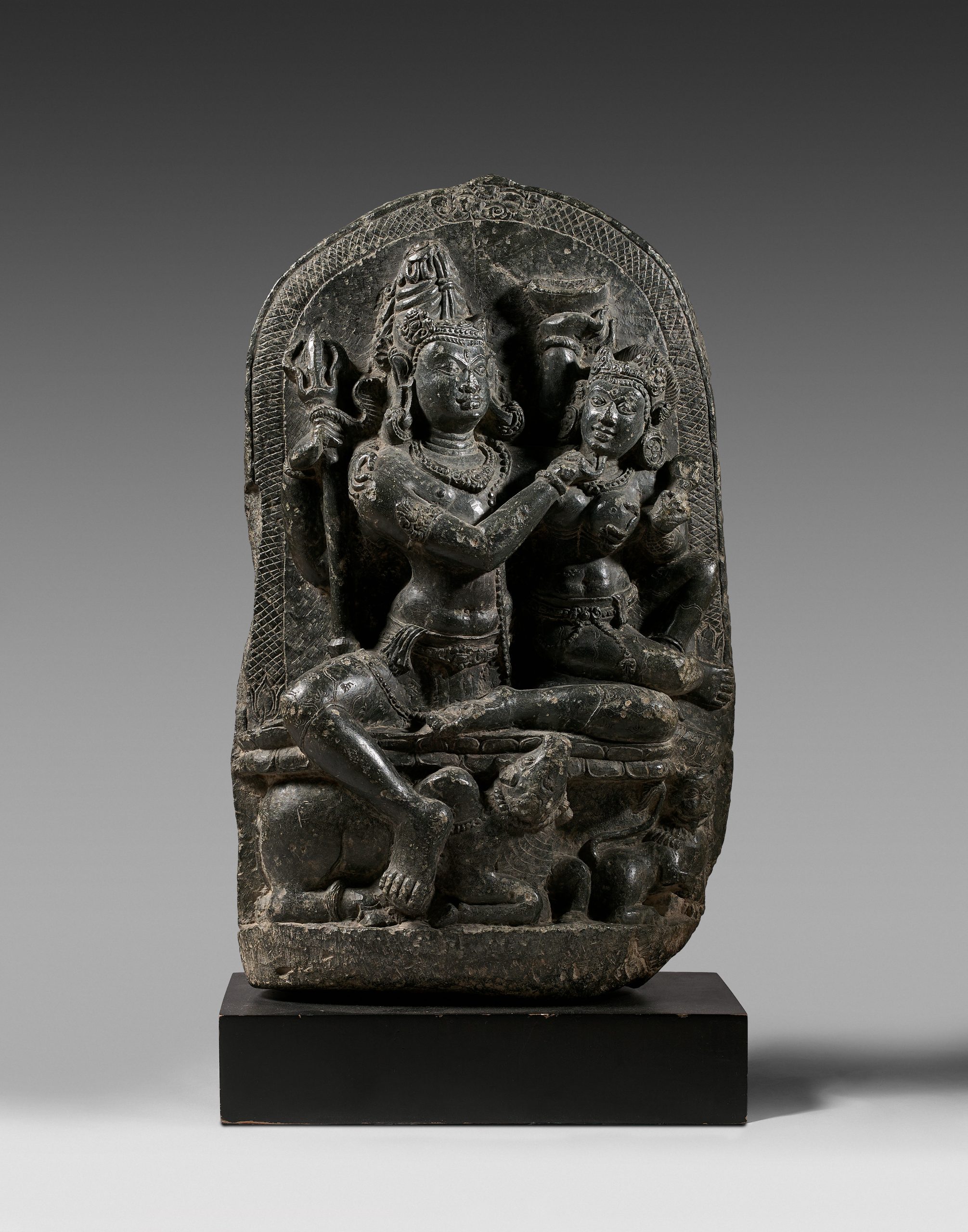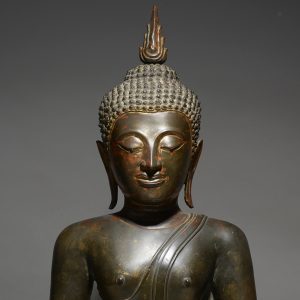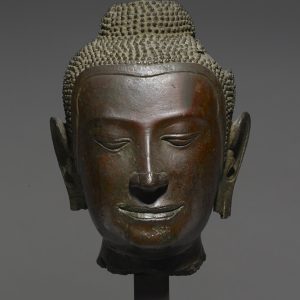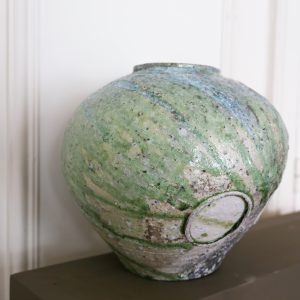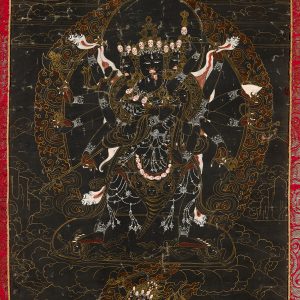Stele of Uma Maheshvara
Black stone
Northeast India,
Pala period, 9th-10th centuries
H. 59 cm
Description
Umāmahēśvaramūrti, a tender iconography of the god Śiva
This superb stele depicts the Hindu god Śiva in his Umāmahēśvaramūrti aspect. This iconography is described in two texts: the Viṣṇudharmōttara and the Rūpamaṇḍana (Rao, 1971, vol. II, Part. I, p. 132). It depicts Śiva and his wife, called in this context Umā, the ‘Favorite’, sitting on the same seat, showing each other signs of attachment and often surrounded by their children and relatives. This subject can be subject to variations in the positions of the protagonists and the number of characters. Several large bas-reliefs in the Ellorā caves (8th century) bear witness to this. In southern India, the theme bears the name of Sōmāskandamūrti and was the subject of numerous processional bronzes. In Nepal, present from the fifth century, Umāmaheśvara became over the centuries the śaiva iconography par excellence.
The richness of detail
Śiva is in a relaxed position, delicately embracing his consort. The two deities seem to be looking at each other; the delicacy of the modelling hints at their tender expression. Umā holds in her hand a mirror symbolising her beauty, while her husband holds in one of his hands his main attribute, the trident (triśūla) around which the cobra, also an attribute of Śiva, is wrapped. Their bodies are richly adorned with various ornaments. The two deities are not alone: at their feet, under the lotiform seat, stand two familiars: the Nandin buffalo and the lion, the respective mounts (vāhana) of the two deities. The scene is delimited by a latticed frieze that frames the couple.
A sober and monumental work
However, despite these various details, the work is characterised by its sobriety, as well as by its remarkable size. The postures are elegant without being excessive, the ornaments delicate, revealing an underlying sensuality, typical of Pala art in the 9th and 10th centuries. The sobriety and elegance of the forms, as well as the graphic treatment of the contours of the faces, perpetuate the Gupta aesthetic under the Pala dynasty. It is a remarkably well-preserved work, with clear iconography and no superfluous elements. The dark stone also gives the scene a certain intimacy.
Provenance: American private collection, then Sotheby’s sale in 1988.

